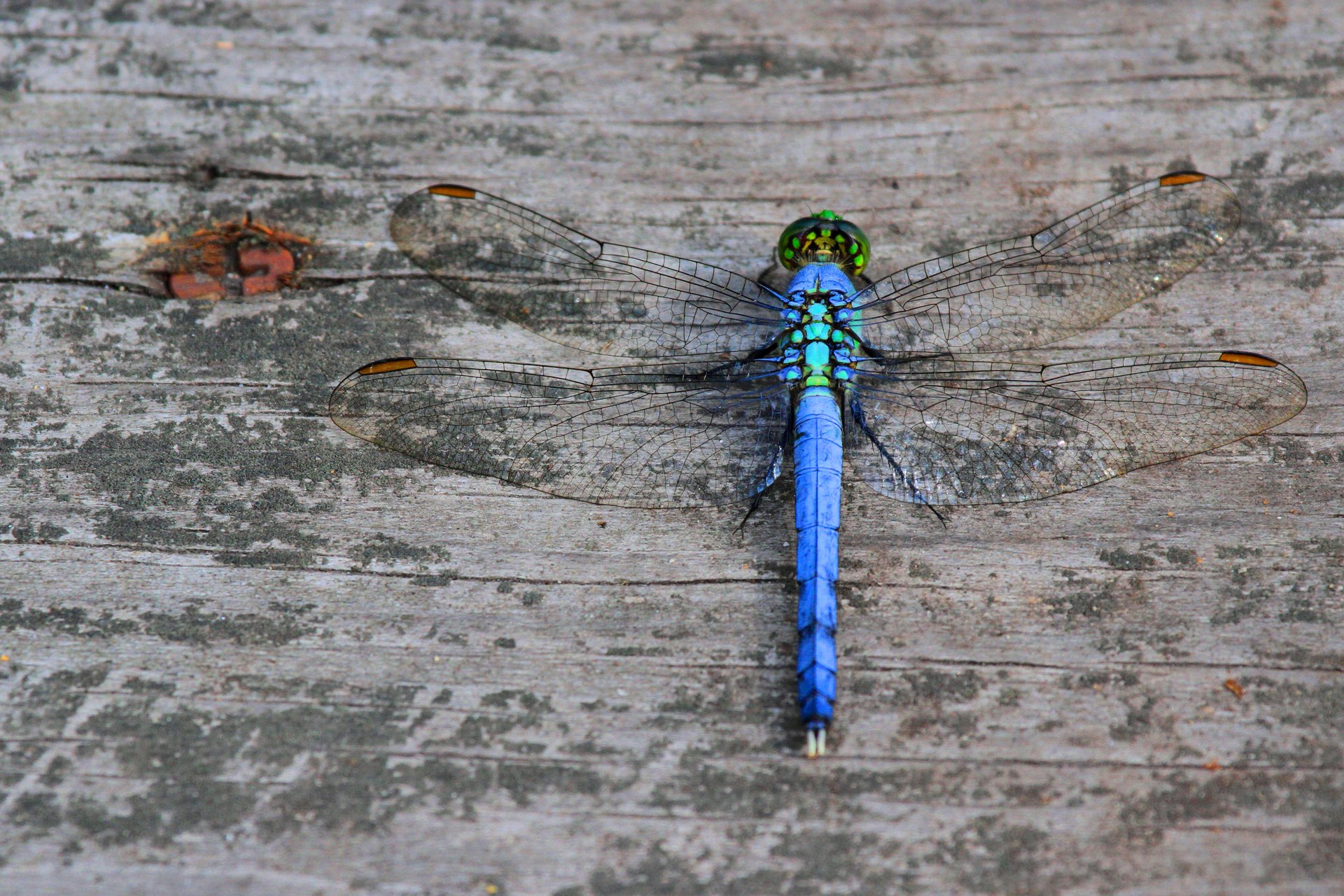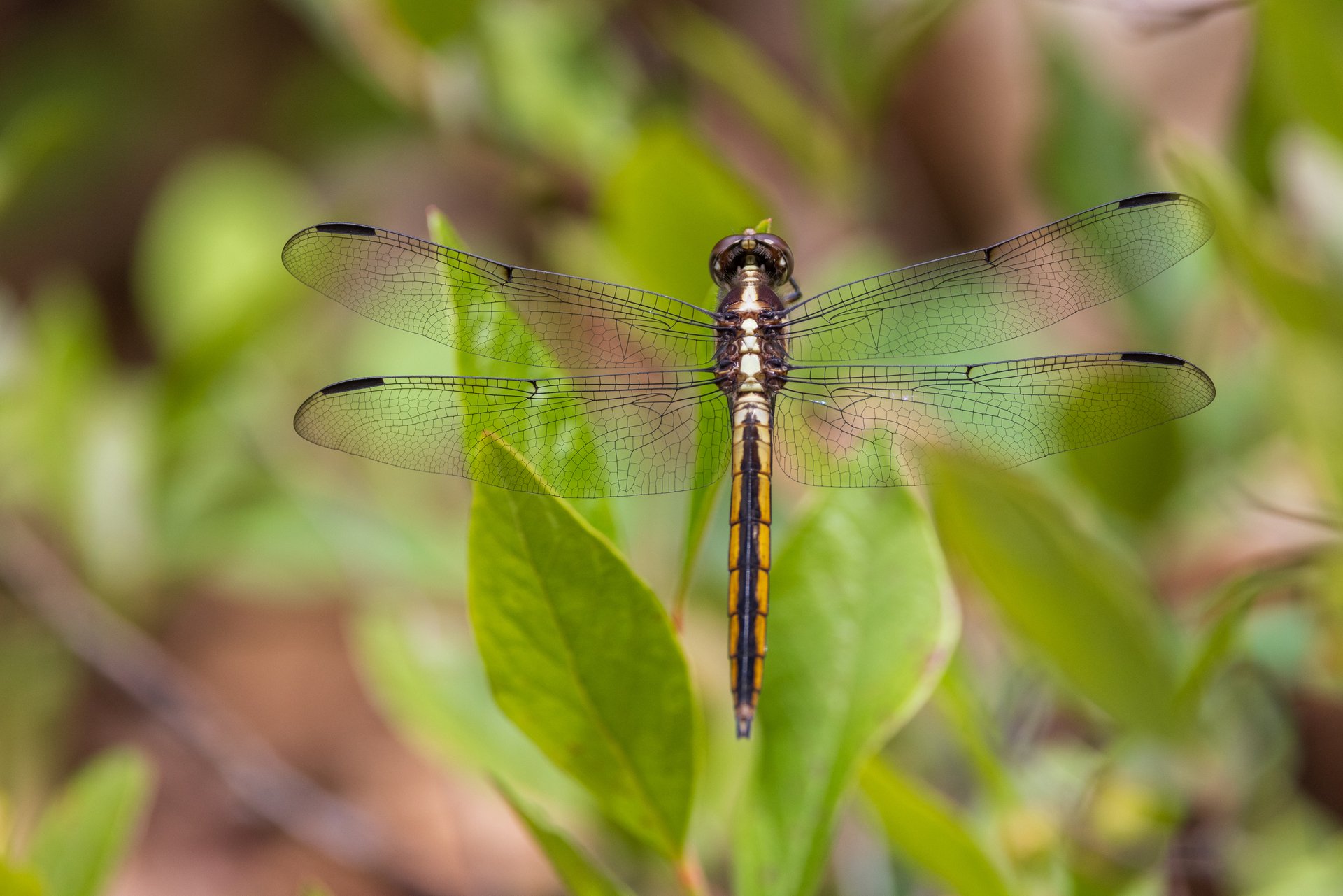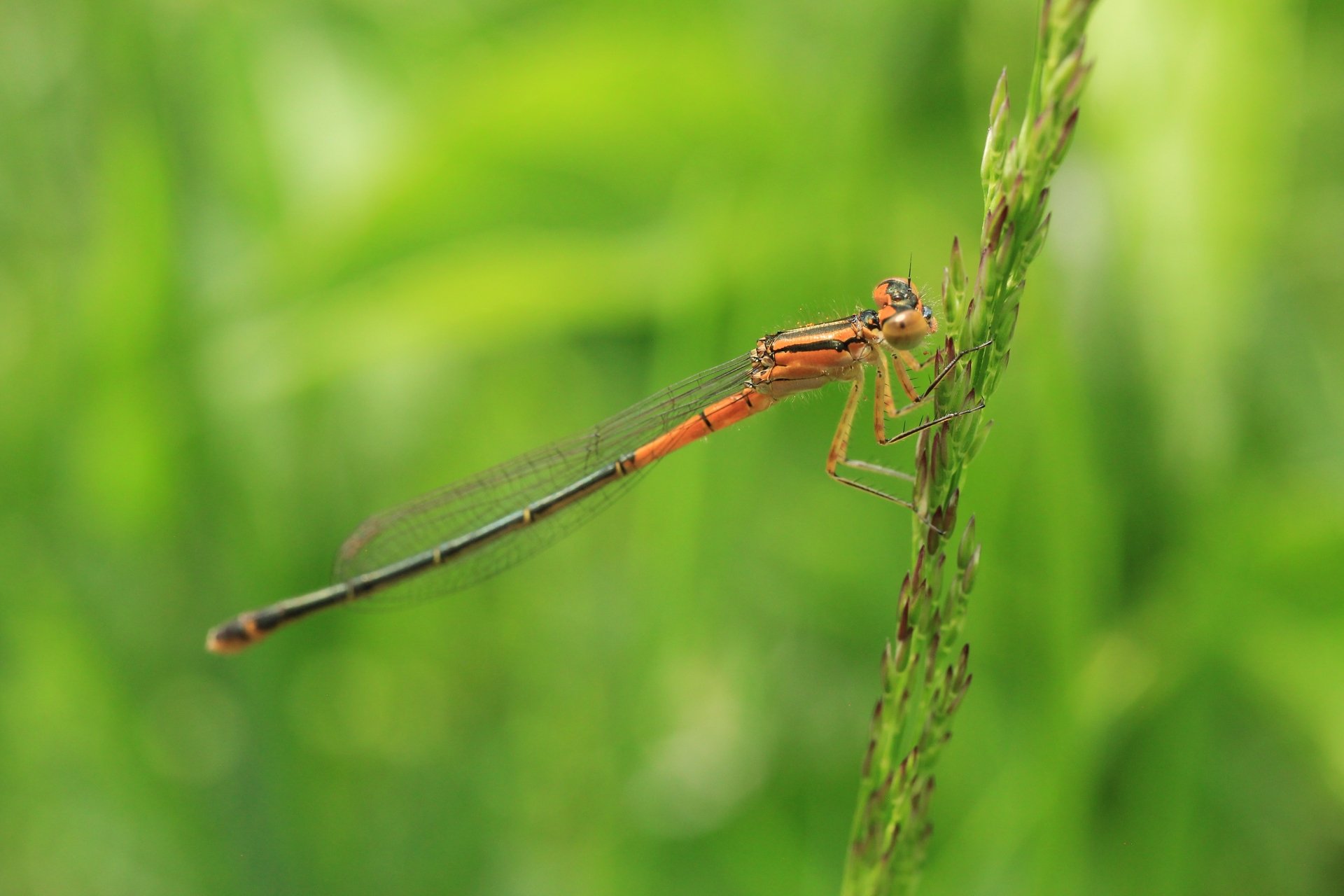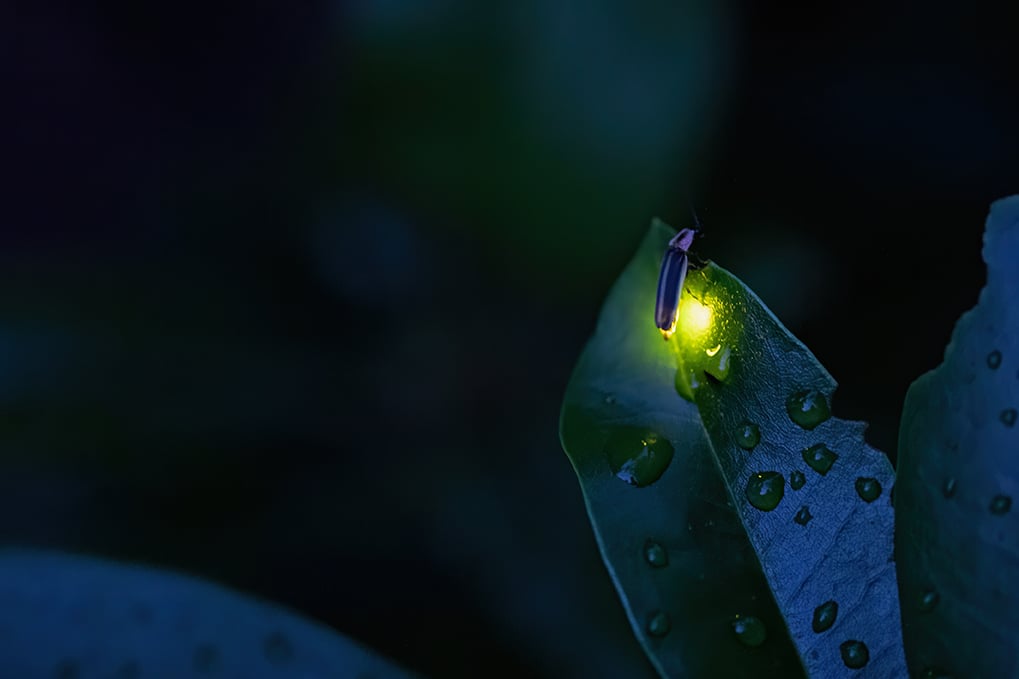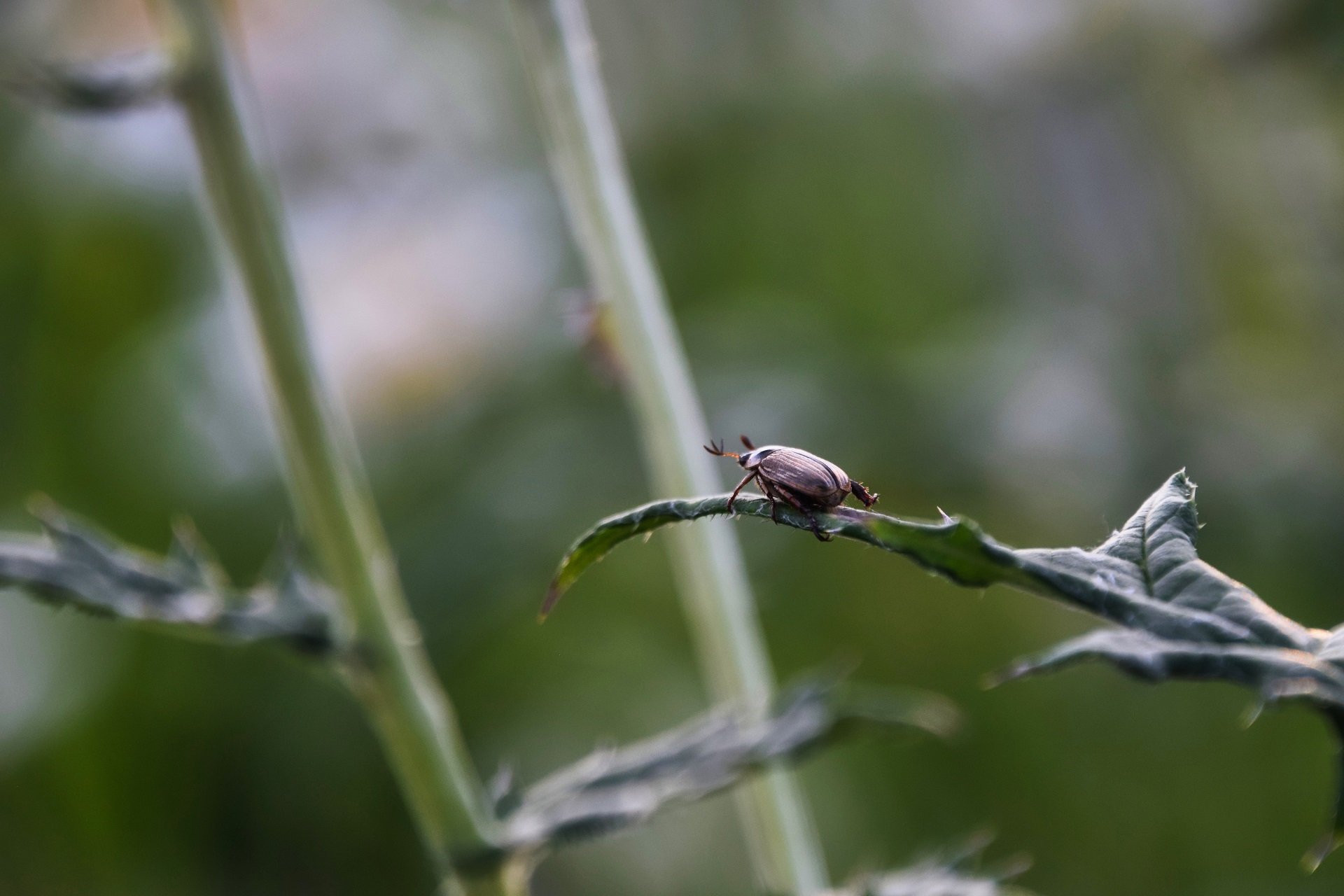Insects & Arachnids
Odonates (Dragonflies & Damselflies)
In folklore from around the world, dragonflies and damselflies symbolize many things—good luck in some places and bad luck in others. Regardless of their symbolic significance, odonates are a beautiful and fascinating part of our insect community.
Worldwide there are more than 5,000 known species of odonates. They come in a dazzling array of colors, some even appearing iridescent in sunlight. Best of all, adult odonates eat a steady diet of other flying insects, including those pesky mosquitoes and black flies!
How to Identify Odonates
Odonates have three main segments—head, thorax, and abdomen—in addition to two pairs of wings and three pairs of jointed legs. A pair of large, compound eyes dominates the head and allows them to see nearly every angle (except directly behind them).
The fore and hind wings, which are roughly equal in size, are attached to the thorax. and allow them to fly in almost any direction and even hover like a helicopter.
The abdomen is elongated into a narrow, segmented cylinder. Distinctive appendages at the tip of the abdomen in males are used for clasping females during mating.
Life Cycle
The typical odonate life cycle includes an aquatic larval stage and a land-based (or terrestrial) adulthood.
Mating & Egg Laying
Dragonflies and damselflies may mate while flying together in mid air in "tandem flights." Or they may mate while hanging on to vegetation. Males are often territorial, defending sections of shoreline, and chasing away other males, sometimes with striking aerial acrobatics.
After mating, females either deposit eggs directly into bodies of water (a pond, bog, or stream, depending upon the species) or inject them into plant tissue in or near water using an organ known as an ovipositor.
Eggs & Nymphs
The eggs hatch into an aquatic larval stage called a nymph. Nymphs are typically voracious predators of smaller aquatic life, such as tadpoles, small fish, and invertebrates.
Metamorphosis
After a period of development, the nymph climbs out of the water, splits its outer exoskeleton and emerges as an adult dragonfly. The newly emerged adult, termed a teneral, is fragile and unable to fly at first.
If you look carefully on vegetation along the edges of weedy ponds or on bridge abutments, you can sometimes find the shed exoskeleton of the nymph, called an exuviae.
Adults
Adult odonates use their large eyes to detect their prey—often at considerable distances. Although many remain near water, some dragonfly species spend much of their time away from bodies of water. A few disperse great distances and even undertake regular migrations.
What's the Difference Between Dragonflies and Damselflies?
Two suborders of Odonata occur in Massachusetts: Zygoptera (damselflies) and Anisoptera (dragonflies). And while they may look very similar at first glance, it's fairly easy to spot the differences between the two groups.
Dragonflies (Anisoptera)
- Larger and more robust than damselflies.
- They hold their wings in a horizontal position when at rest.
- Larger eyes occupy most of their head and sometimes touch each other along the midline.
- Powerful, straight fliers because their rear wings have a broader base and are larger than their front pair.
Damselflies (Zygoptera)
- Usually smaller than dragonflies.
- Typically hold their wings together above the thorax and abdomen when at rest (except for the aptly named Spread-winged damselflies).
- Their eyes are widely separated on their heads and project to the side.
- Are often weak, irregular fliers because their wings and flight muscles are smaller and more delicate.
Odonates in Massachusetts
More than 160 species of odonates have been recorded in Massachusetts, representing 10 different families. Here are six of the more common species that can be spotted across the Commonwealth:
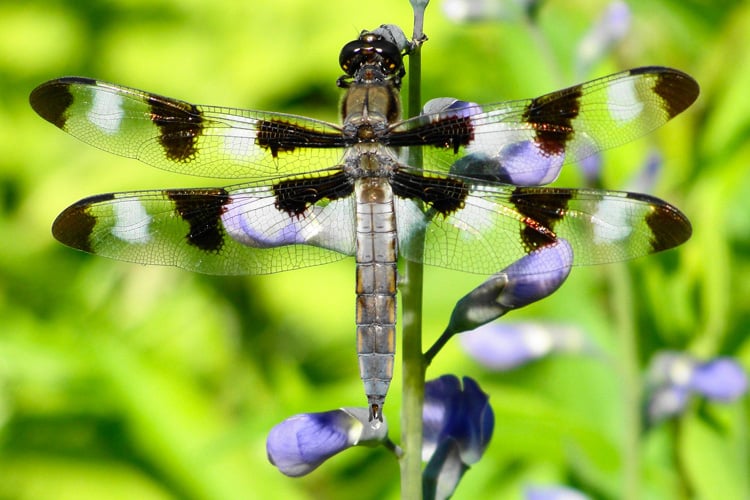 Twelve-spotted Skimmer © Helene Grogan |
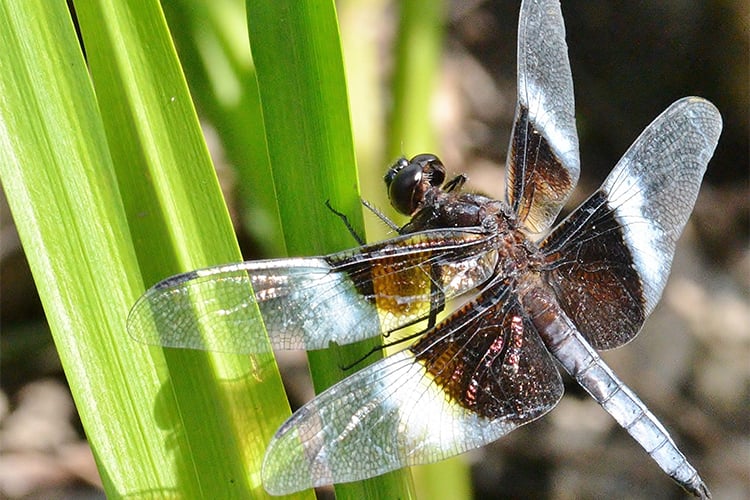 Widow Skimmer © Ron Verville |
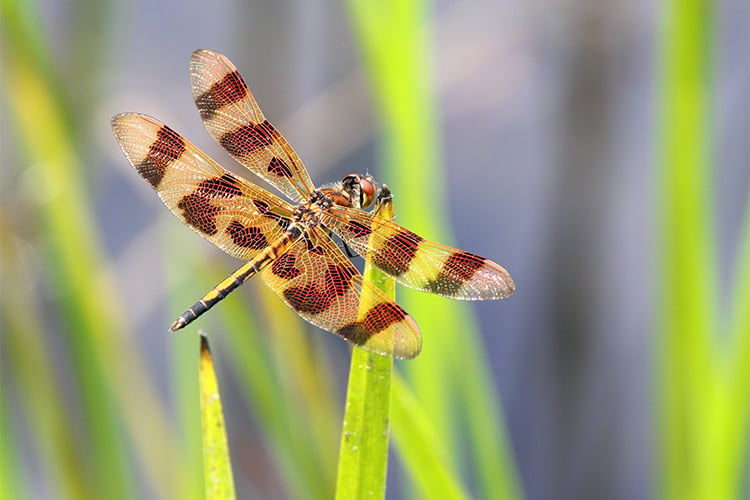 Halloween Pennant © Cheryl Rose |
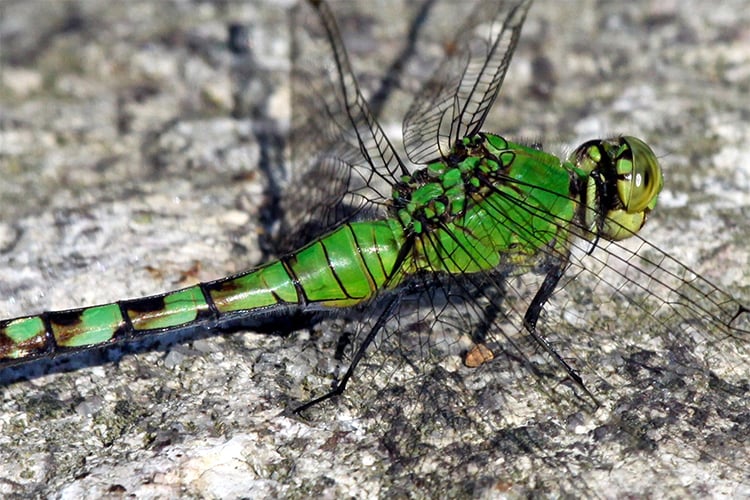 Eastern Pondhawk © Ken Conway |
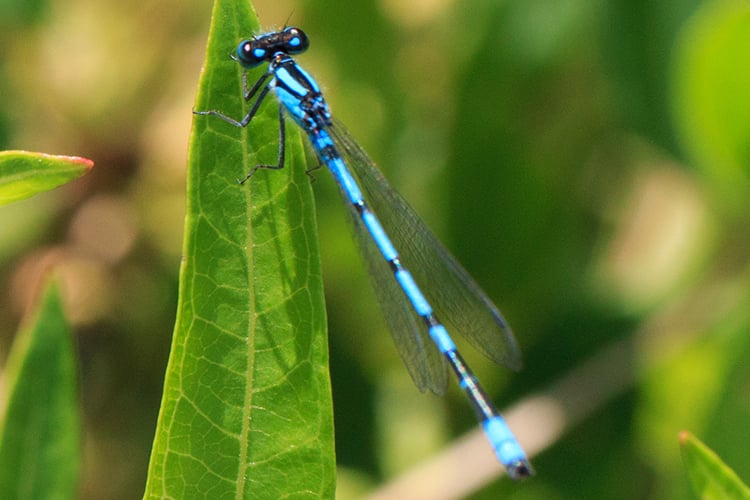 Bluet |
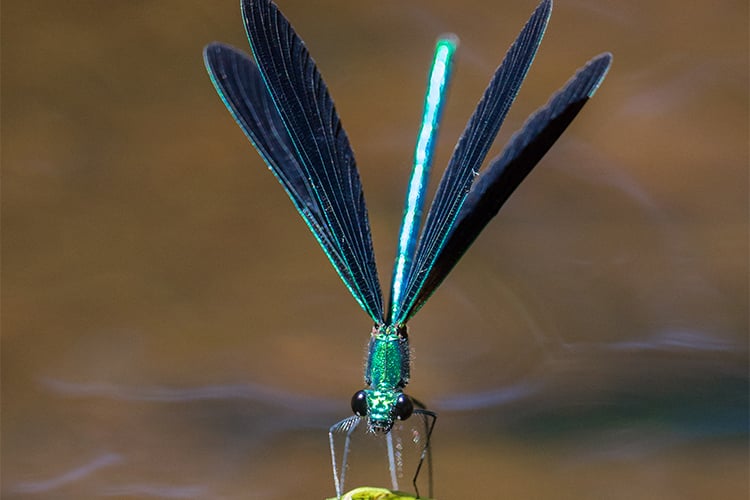 Ebony Jewelwing © Cheryl Rose |
Stay Connected
Don't miss a beat on all the ways you can get outdoors, celebrate nature, and get involved.



